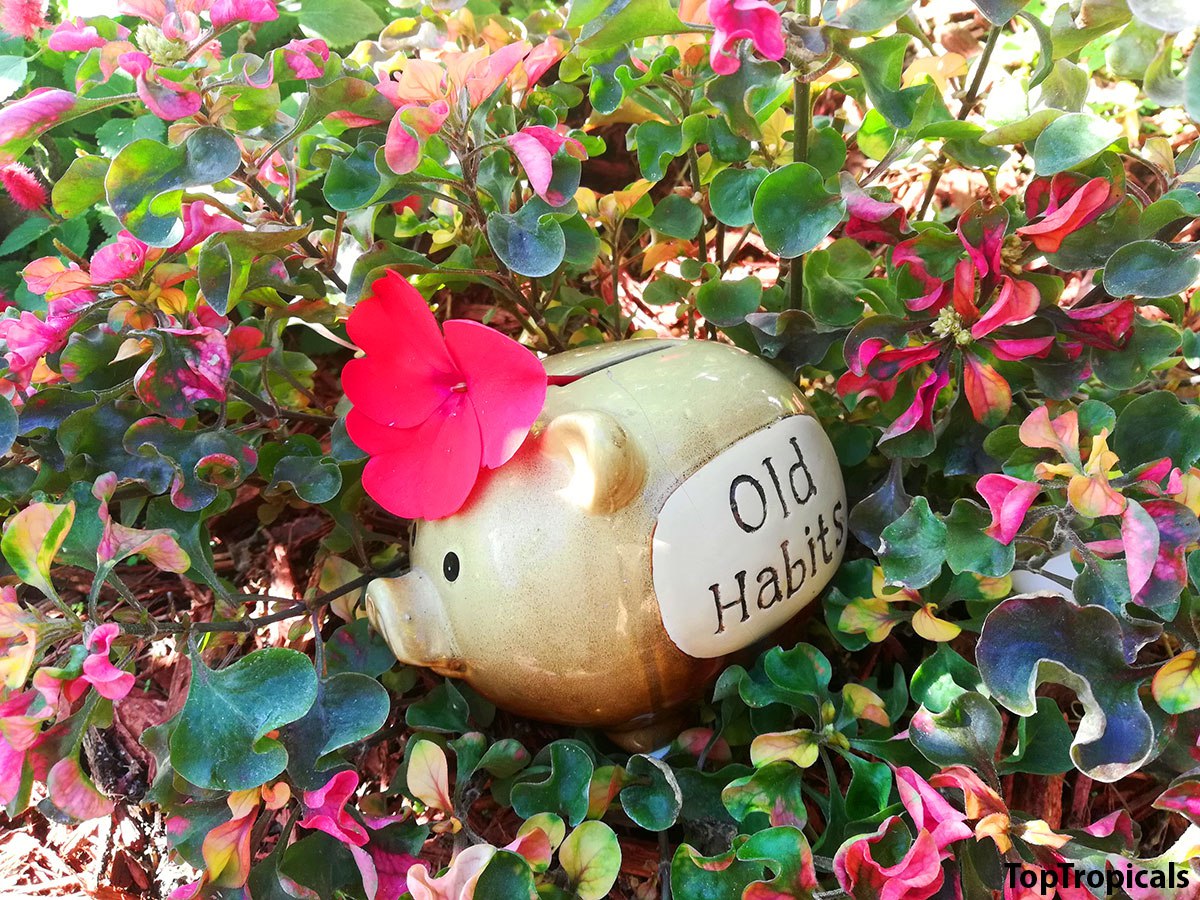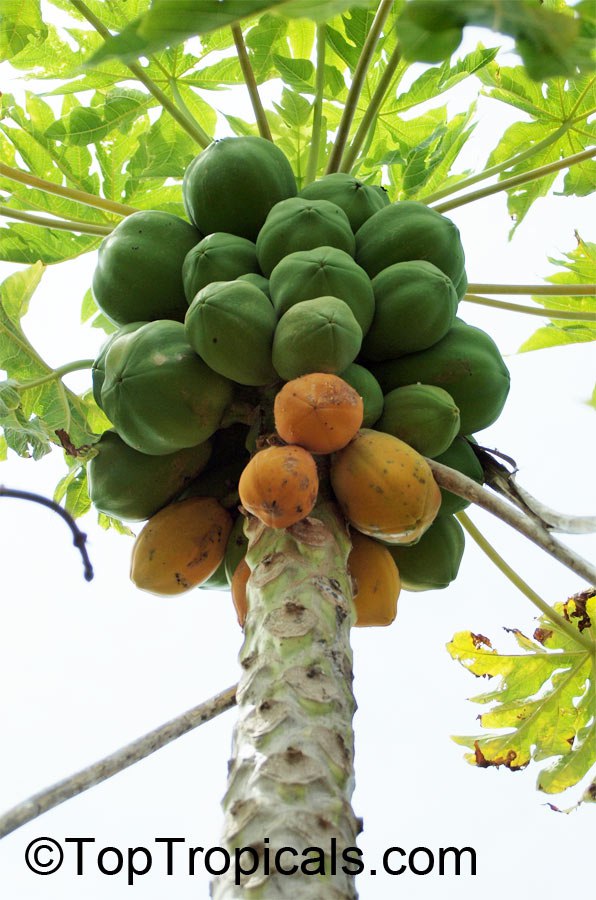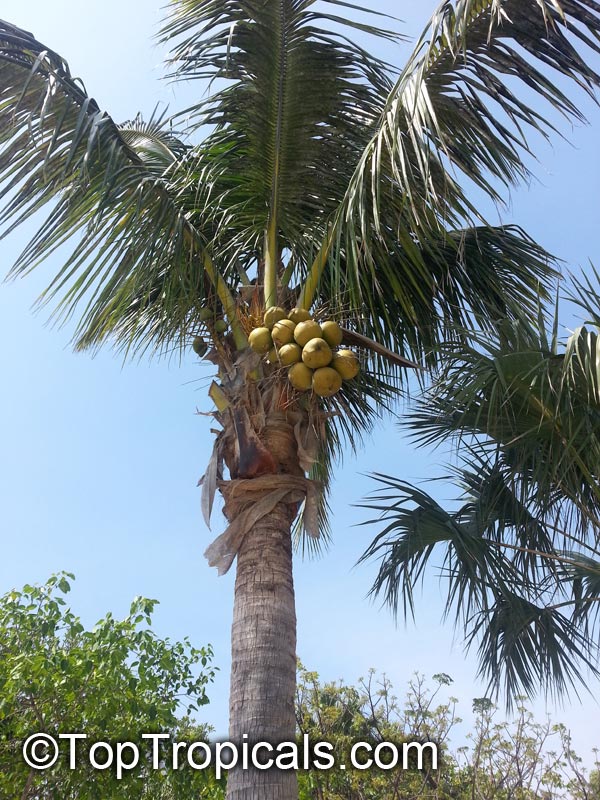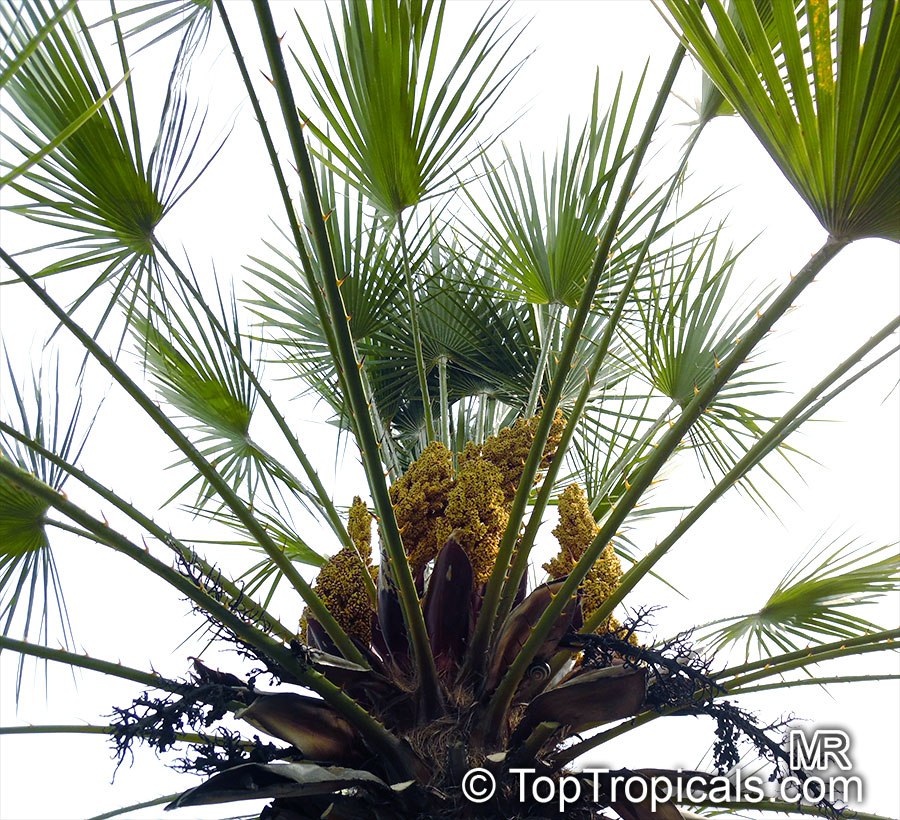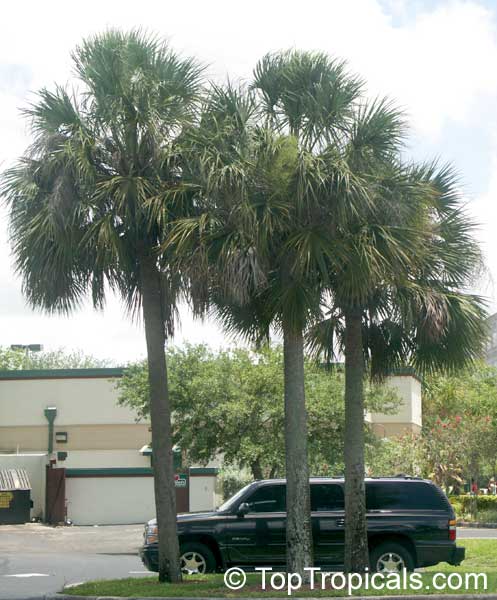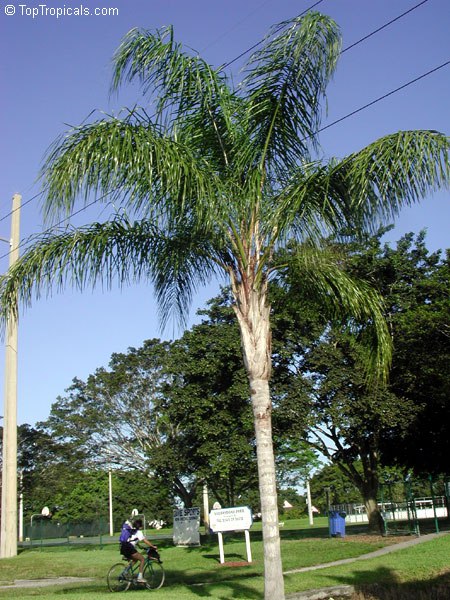Garden Blog - Top Tropicals
New Year with New Plants: how to choose from 17 Tropical Paradise Resolutions
✍️ "A garden is never so good as it will be next year..." - Thomas Cooper.
⚡️ As we step into a fresh new year, it's the perfect time to think about what exciting, special, and life-changing plants we can add to our gardens. The days are getting longer, and spring is just around the corner, so now's the time to make a plan and prepare for the season ahead. Let's take small steps each year to create the garden of our dreams. This winter, consider these fun resolutions:
💋Hang a bird feeder and install a rain barrel- 💋Order some tropical plant seeds for an early start
- 💋Ask your grandparents about their favorite garden plants
- 💋Build a raised bed for succulents
- 💋Plant a fruit tree or two to have some crop this year
- 💋Start a compost pile
- 💋Switch to organic fertilizers and plant boosters
- 💋Fill empty spaces with flowering trees, shrubs, and vines
- 💋Add butterfly attractors to your garden
- 💋Provide water for bees and butterflies to help them thrive and pollinate your fruit trees
- 💋Get a bonsai starter to try bonsai art
- 💋Enjoy meals outside as often as you can
- 💋Teach a child how to plant a tree
- 💋Plant berry-bearing shrubs like Tropical Cherries to feed the birds
- 💋Rake up leaves for winter mulch
- 💋Add a few exotic plants to your indoor collection or container garden
- 💋Share plants as gifts all year long
- 🚩🚩🚩🚩 Happy gardening in 2025!
#How_to #Quotes
🔴 Join 👉 TopTropicals
How to eat a papaya?
😂 Cut it open, scoop out the seeds (they're not part of the fun), peel off the skin, and chop it up. Now enjoy the tropical sweetness – no passport required!
🎥 Or, if you are desperate and have no time for prep – do it like Cash in the video!
📚More from previous posts:
Why do we love Papaya?
How easy to grow is Papaya tree?
Top 10 fruit you'll ever need for your health benefits: #4 Papaya
Top 10 fast-fruiting trees: #6. Papaya
How to have fresh Papaya fruit year around
Top 3 most wanted Papaya varieties
The truth about Papaya
Papayas contain a secret enzyme
🛒 Shop Papaya trees
#Food_Forest #PeopleCats #How_to #Papaya
🔴 Join 👉 TopTropicals
Carefree Garden: How Easy Is It to Grow a Papaya Tree?
👆 For the previous post:
🎮 Practical Guide to Growing Papaya
❤️ Papaya is one of the fastest fruiting plants to grow.
❤️ How Easy Are Papaya Trees to Grow?
❤️ What Light Levels and Soil Types Are Ideal?
❤️ How Much Watering Is Required?
❤️ Growing Papayas in Containers
❤️ Health Benefits of Papaya
❤️ Papayas are a low-maintenance, high-reward addition to a Southern garden or greenhouse collection, whether in the ground or in a container. Their fast growth, year-round fruiting potential, and health benefits make them a must-have for gardeners and fruit enthusiasts alike.
Often starting production the same year from planting a seed, papayas are ideal for gardeners seeking quick rewards. Many dwarf varieties reach only 6-8 feet tall, yet produce large crops of full-sized fruit that are easy to harvest. Papaya trees are space-efficient, making it possible to plant multiple trees in even small gardens. Plant 2-3 different cultivars to enjoy year-round harvests of healthy, delicious fruit.
Papaya trees are exceptionally easy to grow. Technically a large herbaceous plant rather than a true tree, they are resilient and adaptable. They can tolerate light freezes and even hurricane winds without significant damage. Additionally, many varieties are self-fertile, but planting multiple trees encourages better pollination and higher yields.
Papayas thrive in full sunlight, so choose a sunny spot in your garden or balcony. They prefer well-draining, fertile soil enriched with organic matter. Add compost or manure to improve soil quality and ensure healthy growth. Avoid waterlogged areas as papayas are sensitive to standing water.
Papayas need consistent watering to thrive, especially during the growing and fruiting seasons. Water deeply once or twice a week, depending on your climate, ensuring the soil remains moist but not waterlogged. Mulching around the base helps retain moisture and regulate soil temperature.
Papayas can be successfully grown in large containers, making them ideal for gardeners in cooler regions or those with limited space. Choose a container at least 15 gallons in size with good drainage. Use a rich, well-draining potting mix, and place the container in a sunny location. Select dwarf varieties to keep the plant manageable and productive.
Papaya is considered a superfood due to its high nutritional value. Rich in the enzyme papain, it aids digestion and promotes gut health. Papaya is also an excellent source of vitamins A, C, and E, as well as antioxidants that boost immunity and overall wellness. Additionally, papaya leaves can be used as wraps for cooking meats, naturally tenderizing them.
📚More from previous posts:
Top 10 fruit you'll ever need for your health benefits: #4 Papaya
Top 10 fast-fruiting trees: #6. Papaya
How to have fresh Papaya fruit year around
Top 3 most wanted Papaya varieties
The truth about Papaya
Papayas contain a secret enzyme
🛒 Shop Papaya trees
#Food_Forest #How_to #Papaya
🔴 Join 👉 TopTropicals
How to grow your own vanilla orchid at home

Vanilla Bean Orchid (Vanilla planifolia)
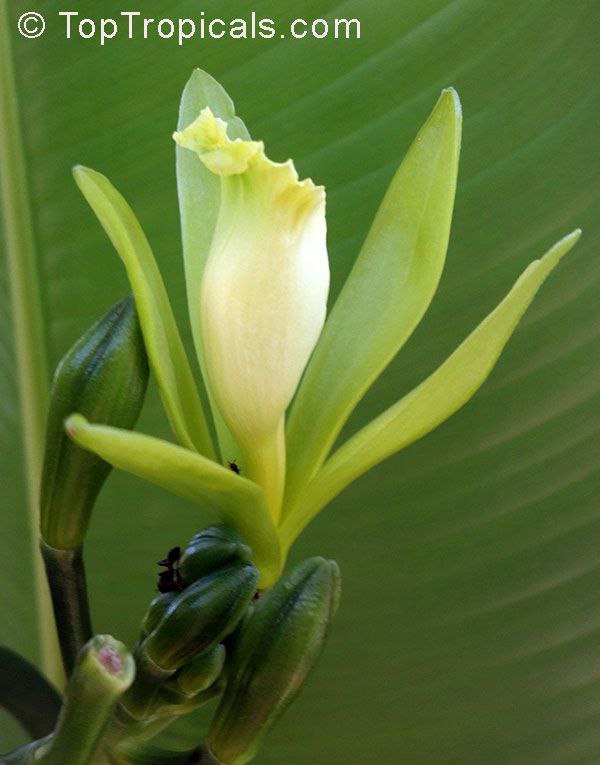
Vanilla Bean Orchid (Vanilla planifolia), flower
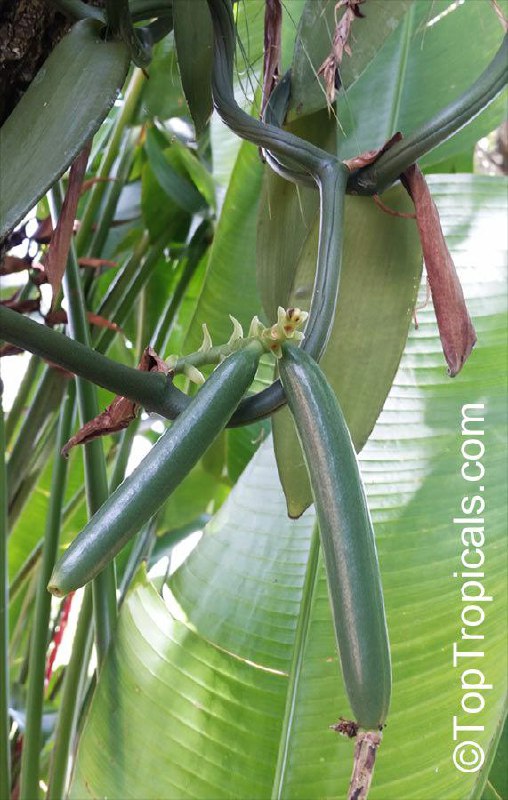
Vanilla Bean Orchid (Vanilla planifolia), seed pods beans

Vanilla Bean Orchid (Vanilla planifolia)
- 🍨 The Vanilla Bean Orchid (Vanilla planifolia) is a tropical climbing beauty and the source of the world’s favorite spice - vanilla. This luxurious plant adds elegance to any space, indoors or out.
- 🍨 A piece of history: Once revered by the Aztecs for flavoring the decadent cacao drink Xoco-latl, vanilla remains a symbol of comfort, luxury, and flavor.
- 🍨 Why it's special: Vanilla pods are scentless at first and develop their rich aroma after careful curing - a reason it’s the second most expensive spice after saffron.
- 🍨 How to grow Vanilla Orchid:
- · Support: Use a trellis, log, or burlap-covered board for climbing.
- · Light: Bright, indirect light works best.
- · Environment: Keep it warm and humid, like its natural tropical habitat.
- · For pots: Add a mini-trellis or small log to mimic its natural climbing needs.
- 🍨 Why you'll love it:
- 🍨 Ready to start your vanilla journey? Add a Vanilla Bean Orchiв to your cart and bring this fragrant, elegant treasure home today!
Growing your own vanilla means adding a slice of the tropics to your home, with the chance to harvest your own vanilla beans for homemade extracts. It's beautiful, exotic, and endlessly rewarding.
📚 Learn more from previous post:
The Secret of how to Make Vanilla Orchid bloom
🛒 Shop Vanilla Bean Orchids
#Shade_Garden #How_to
🔴 Join 👉 TopTropicals
How to care for your mango tree in winter
If you want to enjoy mangoes like ours (in the video) next summer, protecting your tree in winter is a must! Give it the care it needs now, and you'll reap sweet rewards when the warm weather returns.
Keep it cozy and protected: Mango trees love warmth, so when winter comes, they need extra care to stay happy.
Temperature: Mango trees are sensitive to cold. If temperatures drop below 35F, cover the tree with frost cloth or burlap to protect it. For potted mango trees, move them indoors or to a greenhouse.
Watering: Reduce watering during winter. Mango trees don’t like soggy roots in cold weather. Let the soil dry slightly between waterings.
Mulching: Add a thick layer of mulch around the base of the tree to insulate the roots and retain warmth. Keep the mulch a few inches away from the trunk.
No pruning: Avoid heavy pruning in winter, as it can stress the tree. Besides, pruning promotes young tender growth that may get cold damaged. Save major trimming for spring.
Feeding: Stop dry fertilizer in winter. The tree slows its growth, so too much dry fertilizer can do more harm than good. You can continue using Sunshine Boosters Mango Tango year-round because it is water-soluble and natural, and the amount of food needed will adjust with reduced watering.
🛒 Shop Mango Trees
#Food_Forest #How_to #Mango
🔴 Join 👉 TopTropicals
